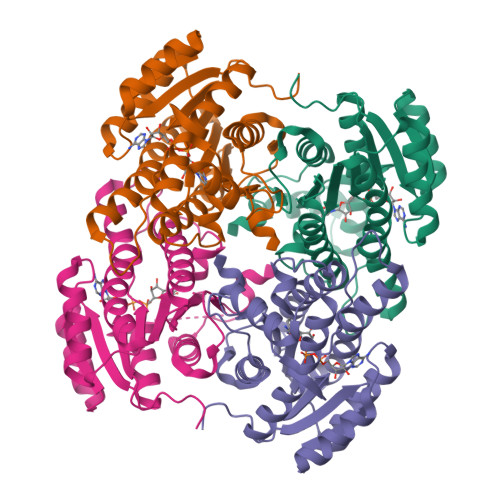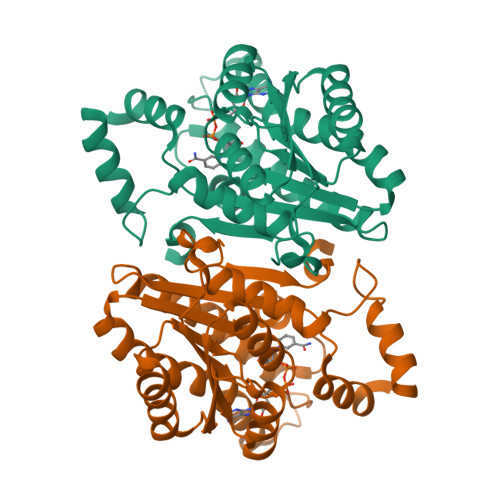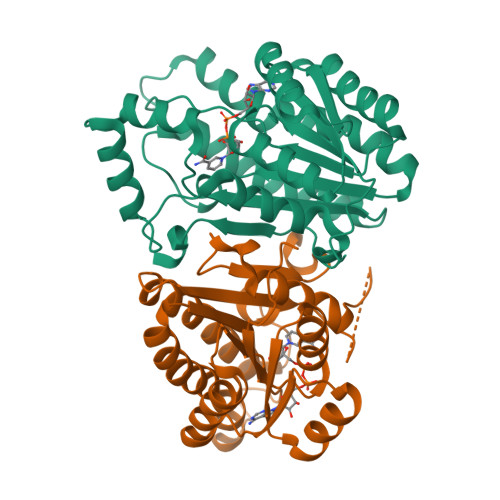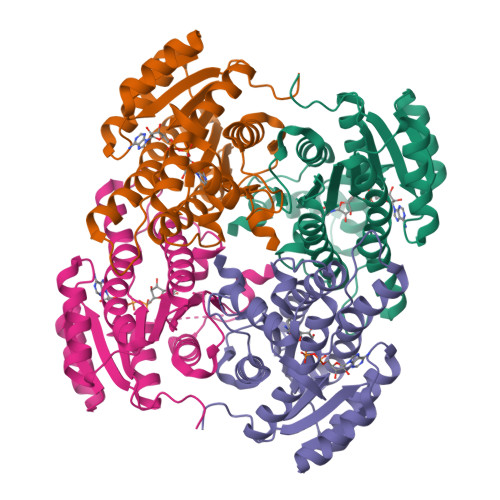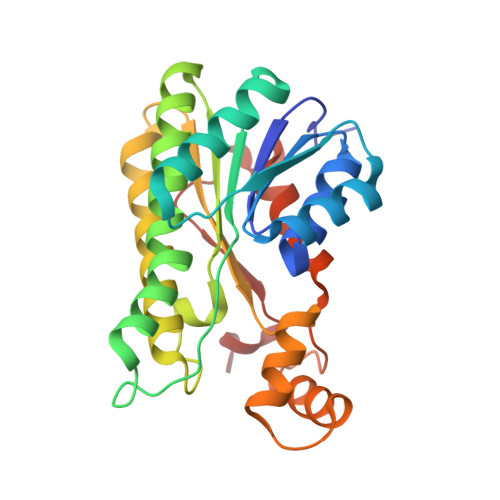Probing the influence of non-covalent contact networks identified by charge density analysis on the oxidoreductase BacC.
Perinbam, K., Balaram, H., Guru Row, T.N., Gopal, B.(2017) Protein Eng Des Sel 30: 265-272
- PubMed: 28158843
- DOI: https://doi.org/10.1093/protein/gzx006
- Primary Citation of Related Structures:
5ITV, 5ITW - PubMed Abstract:
Bacillus subtilis BacC is an oxidoreductase involved in the biosynthesis of the potent antibiotic bacilysin. The crystal structure of BacC was determined at 1.19 Å resolution. An experimental charge density approach was used to calculate non-covalent interactions within the monomer and across the dimeric interface of BacC. This interaction network, in turn, enabled an analysis of non-covalently connected paths that span the protein structure. One of the pathways of non-covalent interactions was examined by mutational analysis. Biochemical analysis of BacC mutants with potential disruptions in non-covalent interactions along this path revealed that residues that form nodes in pathways of non-covalent interactions influence catalytic activity more than others in a similar chemical environment. Furthermore, we note that nodes in the non-covalent interaction networks are co-localized with compensatory mutation sites identified by multiple sequence alignment of proteins with low sequence similarity to BacC. Put together, this analysis supports the hypothesis that non-covalent nodes represent conserved structural features that can impact the catalytic activity of an enzyme.
Organizational Affiliation:
Molecular Biophysics Unit, Indian Institute of Science, Bangalore 560012, India.








